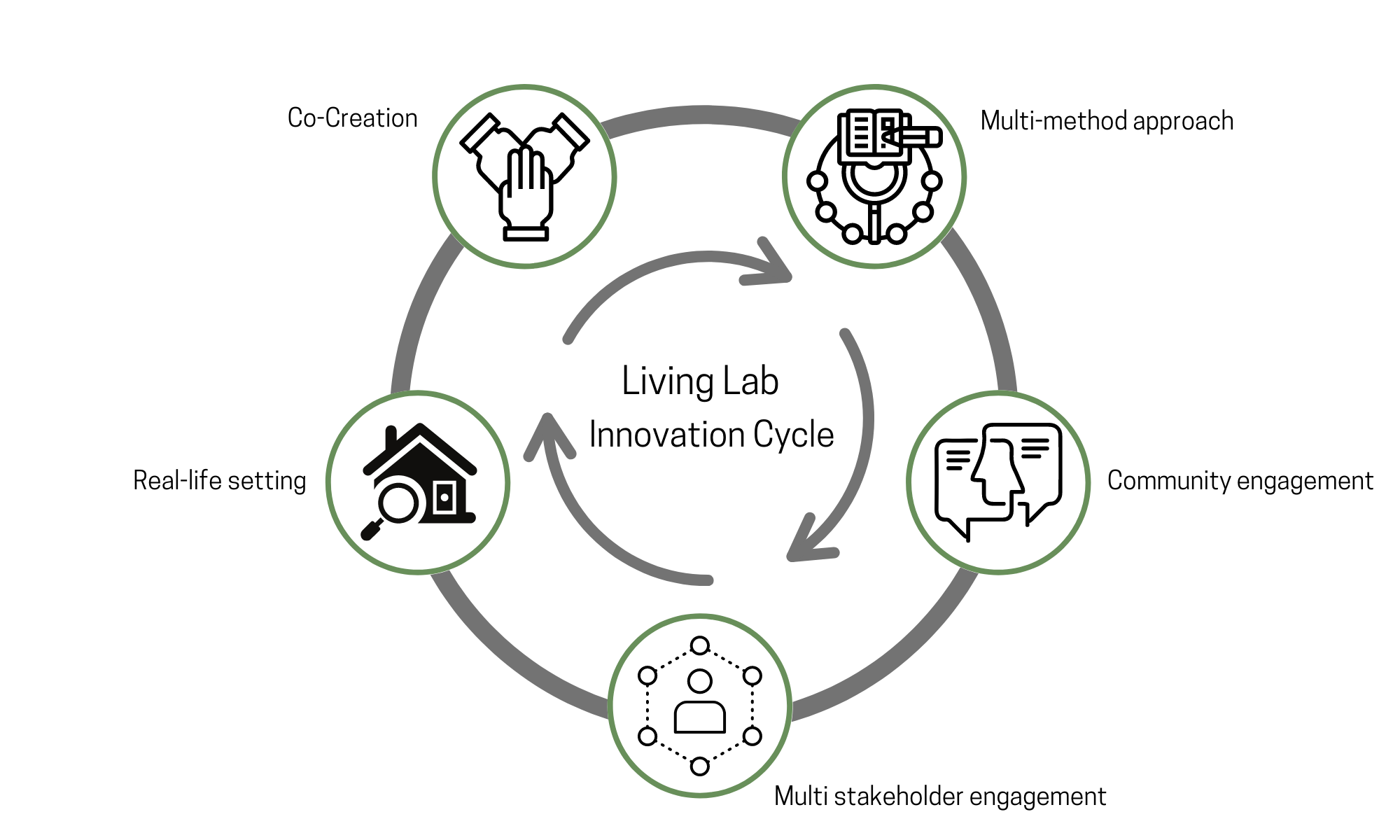Canadians take great pride in our history of innovating for the public good. Today there are a wide range of people, projects, networks, and organizations working in the social impact space across diverse sectors – ranging from enterprises and social service agencies to schools and community foundations.
Innovations such as The Women’s Institute (1897), the Palliative Care Movement, Insite - North America’s only supervised injection site, Roots of Empathy, the Desjardins and Credit Union Movement, and the Registered Disability Savings Plan are Canadian social innovations in the public, private and not-for-profit sectors that have and are significantly improving outcomes around the world.
Yet, it’s an uncomfortable fact that Canada’s many billions spent in social outcomes can produce better outcomes. Our contention is that while the social impact sector has always conducted research & development (R&D) and innovation to some degree, the scale and complexity of the challenges we face today mean we need to dramatically up our game.
What if Canadians embraced the value of R&D for generating outstanding outcomes in social impact?
R&D for social impact could be far more intentional, connected, and supported. In that way, it would be much more accessible, widespread, celebrated, and most importantly, impactful.
What if we had a virtually accessible, distributed R&D function for the sector that everybody could share in and benefit from? This would an audacious opportunity for Canada as we near our country’s 150th birthday in 2017: we can create a breakthrough in the way that R&D is conceptualized, catalyzed, shared, incentivized, and made accessible for the world.
The functions of an R&D engine might be a range of possibilities, including catalyzing and incentivizing — as well as amplifying and sharing — new impactful processes, approaches, knowledge and models for the benefit of all. This might include:
- helping to catalyze a national network of social innovation labs in communities;
- designing a pro-active obsolescence management system for social programs and services; or,
- developing a financial incentive for NGOs to conduct R&D, similar to the Scientific Research & Experimental Development (SRED) tax credit available for the private sector.
R&D has shifted the paradigm of how new and relevant solutions get unleashed in sectors such as: automobile, life sciences, construction, and technology. Now imagine the benefits of robust national R&D resources and support systems for the immigrant settlement, or child & youth development, or senior care sectors.
Canada has yet to marshall required resources to develop a comprehensive networked R&D engine (our metaphor for Canada’s high octane social impact R&D function for the 21st century) that all sectors working to better the world can use. Not-for-profit leaders, passionate amateurs, social purpose entrepreneurs, public policy professionals, philanthropists, think tanks, front-line social service professionals, corporates, private and community foundations, and academic partners are often unable to access the appropriate resources to conduct R&D and innovate on an ongoing basis.
An R&D engine could help share knowledge, tools, platforms, innovation systems and supports to:
- rigorously define problems;
- generate hypotheses and conduct better experiments;
- leverage big data in new ways being pioneered for the social sector by organizations like Data For Good and others;
- access models and approaches from across the sector and beyond;
- build and test prototypes;
- assess which initiatives to scale or pivot;
- share failures;
- simulate solutions and scenarios;
- design feedback loops for pro-active obsolescence management; and,
- surface and share what works widely and accessibly.
Platforms like MaRS Solutions Lab, Alberta’s CoLab, Canada’s funding bodies’ knowledge mobilization networks (jointly funded by SSHRC, CIHR and NSERC), Ashoka Canada, the J.W. McConnell Family Foundation’s Social Innovation Fund and Innoweave, Tamarack’s Vibrant Communities, the global Impact Hub network (and home-grown domestic analogues like the Centre for Social Innovation and HiVE), BC Partners for Social Impact, CIFAR, Grand Challenges Canada, and the UK’s Nesta and What Works Network serve as helpful launch points.

A sector-wide R&D engine would learn from, expand upon and complement existing platforms, and offer Canada the ability to actively foster process, product and systems innovation in a cohesive and networked way by better generating the right questions, challenging existing orthodoxies, launching grand challenge competitions, and catalyzing moonshots – practices, systems, tools or products that have the potential to become mainstream in 10 years.
Such an engine could:
- catalyze, conduct, apply and evaluate R&D;
- incentivize R&D;
- build accessible R&D capacity, available to organizations and passionate amateurs;
- strengthen purposeful cross-disciplinary and cross-generational collaboration;
- scout, harvest and share R&D from across the sector and beyond; and,
- celebrate and nurture a culture of inquiry.
More broadly, it could expand our collective understanding of how social and systems innovation takes place in Canada and how it can be accelerated. The engine could become a proof point demonstrating the power of R&D unleashed to do good better.
Why does R&D matter?
Canada is fortunate to have some remarkable social service systems. Unfortunately, many of them, conceived and deployed many decades ago, are struggling to renew themselves. They aspire to evolve through continuous refinement to ensure they stay relevant for the growing complexity of Canadians’ needs in the 21st century. Think of challenges like fetal alcohol syndrome, increasingly unequal levels of educational attainment for different populations, child and youth mental health, an aging population, or retooling a curative health system into a preventative one. New R&D support tools like the Canadian Index of Wellbeing and the Social Progress Index can be used in local or national contexts to help orient public policy.
While Canadian social impact organizations in the private, public and not-for-profit sectors have deep knowledge about the vulnerable populations they serve, they are often trapped in highly restrictive funding models that don’t value their strategic work as social impact innovators. They lack access to financial, knowledge, process and systems innovation resources — resources that would enable experimentation, innovation, cross-sector collaboration and multi-organization consortia to respond to new needs and to improve outcomes on longstanding social problems.
New insights and new tools are emerging. The last decade has produced an enormous suite of applicable new knowledge and tools. Think of the new methodologies and approaches, like social innovation labs, for designing enhanced social outcomes that derive from…
- the application (and combination) of new hard and soft technologies (e.g. smart phones and apps);
- new “nudge” insights or “social stickiness” (informed by the rapidly growing knowledge about human psychology and brain science); and,
- the range of ways that social innovation researchers (an academic field only several decades old) are beginning to crack the innovation code.
Many social service delivery systems, originally established and funded only to ameliorate symptoms, are itching to repurpose themselves and solve problems at their roots by using their accumulated experiential wisdom plus new innovation tools and insights to reinvent pathways to sustainable wellbeing.
Think of a microcosm of social delivery, the immigrant settlement community. Currently, it is a billion dollar industry on its own. Doesn’t it make sense to have a national centre of excellence supporting immigrant settlement service innovation?
Do we have an innovation system commensurate
with our public spend for social outcomes?
Looking down from 70,000 feet, Canada’s public spending on social outcomes (health, education and social policy) represents a whopping 17% of Canada’s GDP, or $338 billion (2014 estimate). Canada’s not-for-profit sector (including hospitals and universities) is calculated to be about 7% of GDP or $100.7 billion (2007). While there is some very sophisticated R&D in parts of the social impact sector, like health, there is a real thirst for R&D by leaders in others, like frontline community services.
Now imagine…
What if social impact organizations had access to an R&D function in the same way they have access to a finance or communications function? What if funders, donors, and grantmakers support, incentivize and even reward R&D? What if an R&D engine could help organizations with pro-active obsolescence management, so social services and programs are constantly renewed? What if we could invest in growing R&D capacity within organizations?
What if Canada led the world in achieving breakthroughs in homelessness, child and youth mental illness, community care, and other complex challenges as a result of a robust and integrated R&D function shared by social impact organizations across the country?
Author’s note: The authors would like to thank outside readers, listed below, for making important comments on earlier drafts of this blog. Of course, any errors or affirmations remain the responsibility of the authors. Thanks to: Maureen Fair, Zoe Fleming, Tatiana Fraser, Allyson Hewitt, Stephen Huddart, Indy Johar, Luc Lalande and Geraldine Cahill.









